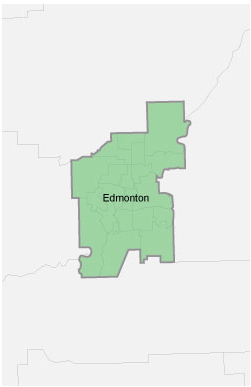Operating large vehicles and equipment safely
Large vehicles and equipment in the construction, transportation, oil & gas,and agriculture sectors are frequently involved in power line and cable strikes.
- The leading cause of power line accidents in Edmonton involve heavy equipment such as trackhoes, backhoes, and directional drills.
- The majority of incidents involving overhead power lines and construction equipment in Edmonton occur while the equipment is being operated or transported.
- Over 50% of direct power line contacts in Edmonton involve excavators.
- Over 85% of power line contacts in Edmonton involve underground power lines.
Ensuring proper power line safety practices are followed when working near power lines is essential to having a safe worksite. To avoid becoming a statistic, ensure you and your equipment are at least 7 metres away from overhead power lines and contact Utility Safety Partners to request a locate for underground utilities before breaking ground. If your work requires you to work within 7 metres of an overhead power line, call us at 780-412-4500 and we can help provide guidance about working safely around electrical equipment.
Electricity safety tips for all industries
While every industry has specific risks while working around electrical equipment, cables, and power lines, there are some safety tips that apply to any industry that works with or moves oversized vehicles and equipment.
Review EPCOR's Guidelines for Working in Close Proximity to Electrical Equipment handbook for detailed information.
Ensure you know what to do if you make contact with a power line.
Enforce the 7-metre rule
Always maintain a safe distance from power lines. Your equipment does not need to directly touch a power line to cause an incident. Electricity can arc or "jump" from the power line to any conductive object. The chances of arcing increase with higher voltages or in wet or humid weather. The ability of electricity to arc decreases with distance. So make sure your crew and equipment maintain a 7 metre distance away from the overhead power line to prevent arcing. If your work requires you to work within 7 metres of an overhead power line, call us at 780-412-4500 and we can help provide guidance about working safely around electrical equipment.
When equipment makes contact with a power line, it puts both the operator and the workers standing in the surrounding area at risk. An electrical current may flow through the equipment and into the ground for up to 10 metres putting the lives of your crew at risk. The voltage in the ground will be highest close to the equipment that is contacting the power line and "ripples" outward, energizing anything touching it. Safe work practices like enforcing the 7-metre rule to overhead power lines reduce the chances of accidental contact that can lead to serious injury or death from electrical shock.











